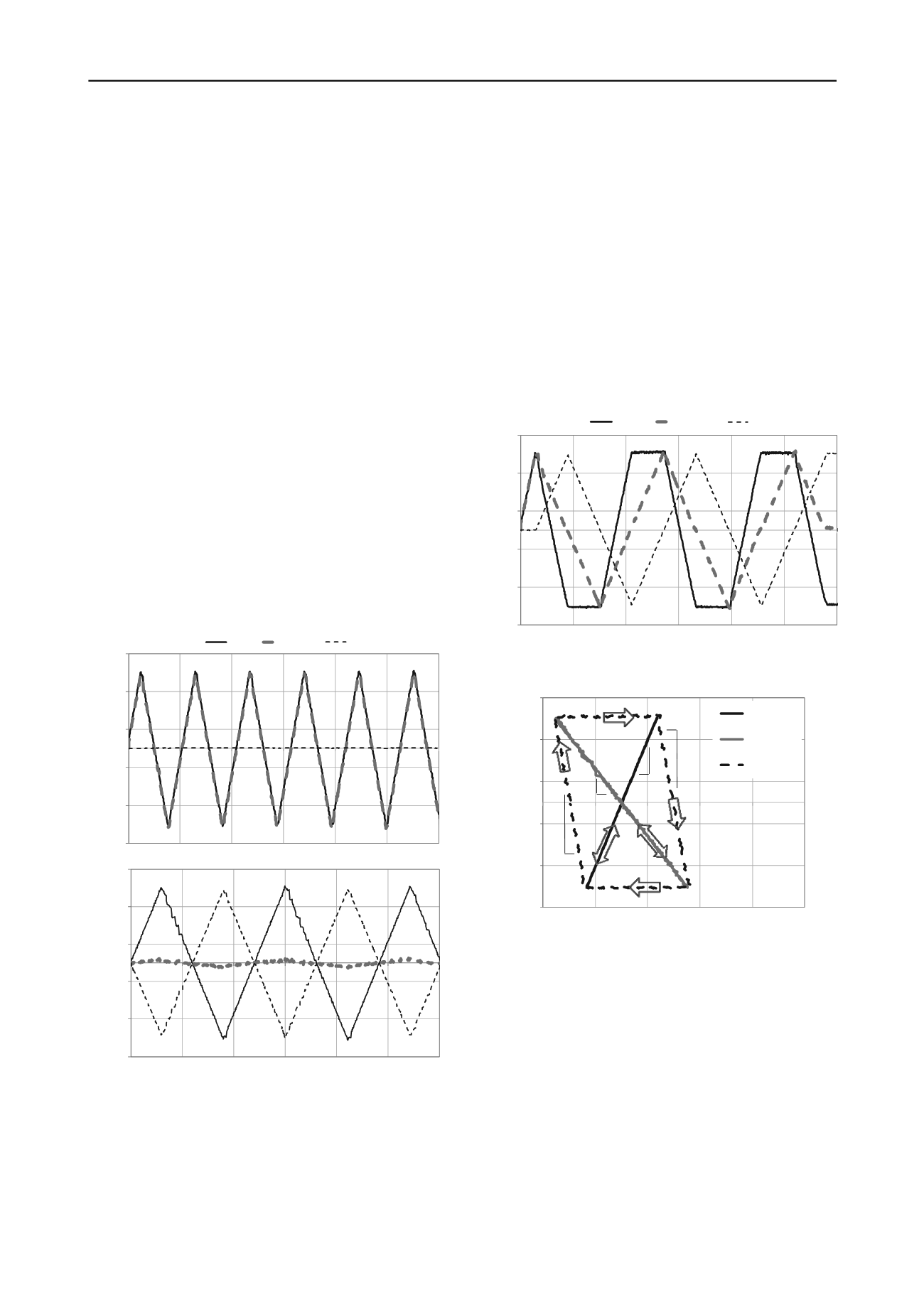
1461
Technical Committee 203 /
Comité technique 203
Furthermore, it can be observed that the number of cycles
required to obtain a double amplitude of
q
of 5 % is smaller in
the case of UCT/30/60/80 test (N = 11) than in the UCT/40 test
(N = 14), while it is substantially greater in the case of
UCT/30/60/50 test (N = 96). This suggests that the
consideration of only uniform loading to evaluate liquefaction
potential may not be suitable, namely when the singular peak
load occurs in the first cycles, as previously concluded by
Azeiteiro et al. (2012).
3 EFFECT OF LOADING MODE ON THE UNDRAINED
CYCLIC BEHAVIOUR OF A SAND
3.1
Load patterns
Two different tests were carried out in order to study the effect
of loading direction on the behaviour of Coimbra sand: axial
and radial cyclic triaxial loading. In the first test (UCT/V),
which is the most common in laboratory testing, the radial stress
was kept constant while the axial stress was varied in order to
reach an oscillation of the deviatoric stress of about ±40 kPa
(Figure 2a). A similar oscillation of deviatoric stress was
imposed in the second test (UCT/H), but by varying only the
radial stress, as shown in Figure 2b. It can be observed that the
loading frequency used in the latter test had to be reduced, in
order to keep the variation of axial stress (which was controlled
by a Constant Rate of Strain Pump – CRSP, instead of an
air/water interface) close to zero. However, it is commonly
accepted that the influence of the loading frequency on the
results of these tests is negligible (e.g. Liu et al., 2001).
-50
-30
-10
10
30
50
0
50
100
150
200
250
300
v
,
h
, q (kPa)
q
sv
sh
v
h
(a)
-50
-30
-10
10
30
50
0
50
100
150
200
250
300
v
,
h
, q (kPa)
t (s)
(b)
Figure 2. Unidirectional load pattern: (a) vertical and (b) horizontal
cyclic triaxial loading.
In addition, to study the effect of multidirectional loading, an
undrained cyclic triaxial test with simultaneous variation of the
axial stress,
v
, and the radial stress,
h
, was performed
(UCT/HV test). These stresses were varied 90 º out of phase, in
such a way that for a complete cycle the average value of p was
kept constant and the maximum oscillation of the deviatoric
stress was ±40 kPa (Figure 3). Thus, the imposed load can be
considered similar to those used in the other tests, where only
the axial or radial stress was varied in each cycle.
Although the same oscillation of deviatoric stress is being
applied, the loading mode used in each test was different. While
in axial loading only one of the principal stresses (specifically,
v
) was varied during the whole test, in radial loading two of
the principal stresses (i.e. those in the radial direction,
h1
and
h2
) were changed. Finally, in the case of multidirectional
loading, the three principal stresses were varied. This implies
that the direction of the total stress path is different in each test.
As shown in Figure 4, when only axial loading is applied
(UCT/V test) the ratio between the variation of the deviatoric
stress, q, and the variation of the mean total stress, p, is 3, while
for radial loading (UCT/H test) this ratio is 1.5. In the case of
multidirectional loading (UCT/HV test), it can be seen that a
closed total stress path connecting the extreme points of the
previously described tests was used.
-50
-30
-10
10
30
50
0
50
100
150
200
250
300
v
,
h
, q (kPa)
t (s)
q
sv
sh
v
h
Figure 3. Multidirectional load pattern (approximately first 2.5 cycles).
-50
-30
-10
10
30
50
520
540
560
580
600
620
q (kPa)
p (kPa)
UCT/V
UCT/H
UCT/HV
3
1
1.5
1
6
1
6
1
Figure 4. Total stress paths (one cycle).
3.2
Comparison of axial and radial cyclic triaxial loading
The stress paths of similarly prepared samples subjected to axial
(UCT/V) and radial (UCT/H) loading are presented in Figure 5.
It can be observed that a faster degradation of the mean
effective stress occurred for radial loading. As clearly shown in
Figure 6, the average excess pore water pressure generated in
each cycle is greater in UCT/H test, with fewer number of
cycles being required for the onset of liquefaction (i.e. to obtain
5 % double amplitude of shear strain). In part, this can be
justified by the different loading direction applied to the sample
in these tests. As it can be seen in Figure 4, for the same
deviatoric stress, q, the range of variation of the mean total
stress, p, is greater for the UCT/H test than for the UCT/V test.
Thus, for a given variation of pore water pressure in both tests,
the variation of the mean effective stress, p’, would be greater in
UCT/H test.


